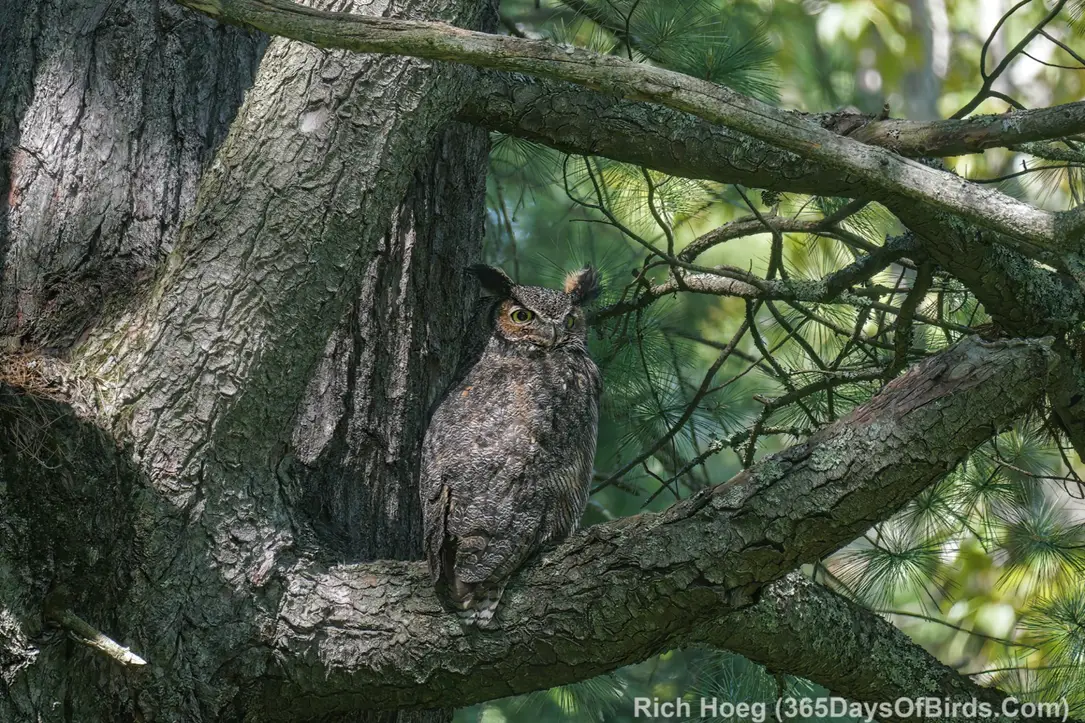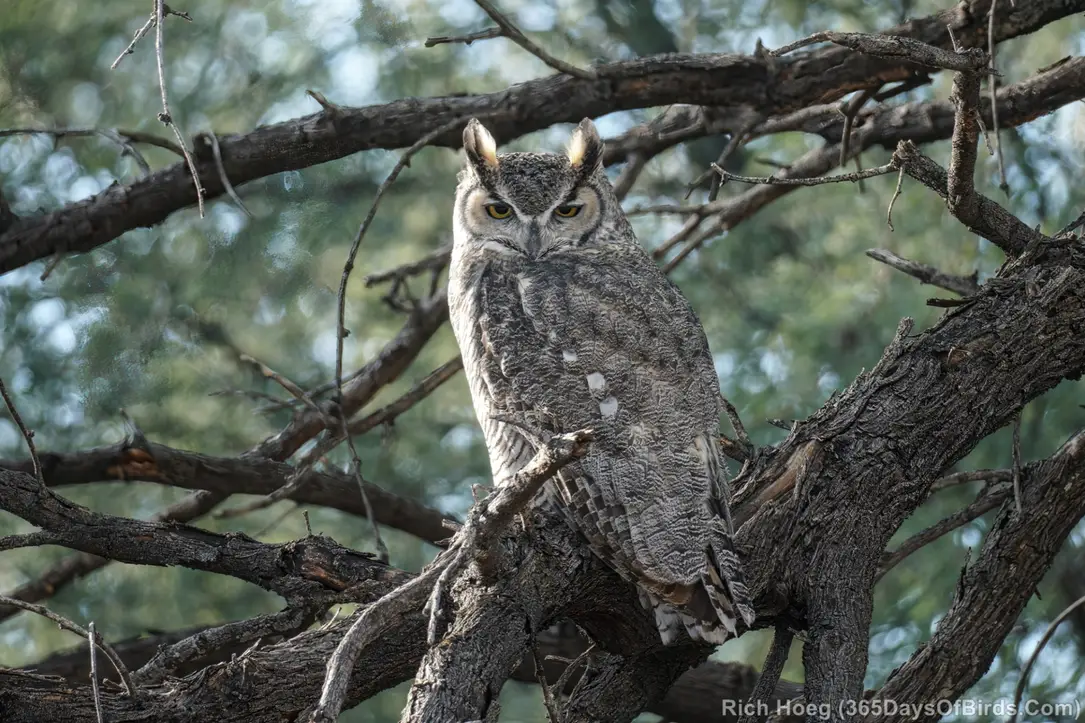- cross-posted to:
- forumlibre@jlai.lu
- cross-posted to:
- forumlibre@jlai.lu
From Rich Hoeg
Plumage Variations, Morphs, or Phases. All three terms describe feather color differences in birds, and this case specifically owls.
In the 1st image you are viewing a Great Horned Owl (GHO) adult and owlet. The parent has an "Arctic Phase’ coloration to its feathers, which is very white. The photo was taken during June of 2023 in Alberta.
Arctic Phase Great Horned Owls tend to live well north in Canada where the white coloration helps with camouflage during the snowy season.
We now move south for a “Desert or Southwest Phase” GHO which I watched hunt in Arizona’s Sonoran desert late yesterday afternoon. Its grayish white colors help blend in with the desert habitat.

Finally we move to NE Minnesota. This GHO has a more common “Boreal Forest Phase”. This particular owl has nested near my home for the past six years. Its brownish gray coloration helps the bird blend in with the white pine in which it is perched.

Wow - how long does it take for a GHO to develop a color matching their environment?
It seems to be a speciation based on what is more effective coloration based on their environment and foliage types. That wiki entry goes into the types of speciation, which is something I haven’t read about before. It seems there are 4 types based on how far they diverge and get isolated from the original species.
This article I found goes more specifically into the GHO specific color divergences. As a heads up warning, there are non-living museum specimens as most of the example photos in the article. They are pretty good ones as far as preserved birds go, but they are very obviously inanimate now if that is something you don’t wish to see.
I’ve seemingly got some type of eye infection so I can’t really read either article now, but they both look good, and I’ll have to come back to them myself.


